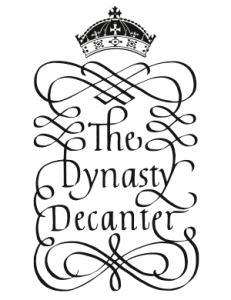
They were all distinguished members of the illustrious ROYAL HOUSE of STUART and their remarkable story is briefly told here.
The DYNASTY decanter was also created to celebrate the evolution of Scotch whisky distilling during the 200 years spanned by these seven Stuart monarchs. SCOTCH WHISKY – Scotland’s premier product, now acclaimed throughout the world is represented in the DYNASTY decanter by a 31 YEARS OLD single malt whisky from the St Magdalene Distillery.
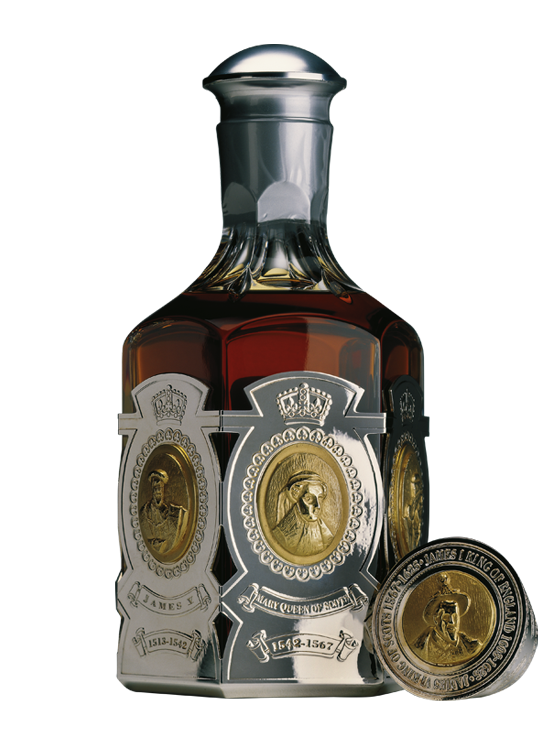
Skillfully cast in silver and decorated with pure gold, these medallions carry the heads of the seven Stuart monarchs commemorated by this decanter. They are based mainly on the work of contemporary artists. The crown-shaped silver stopper carries symbolic representations of the Crown of Scotland reconstructed in 1540 by order of James V. The stopper is topped with the golden head of James VI who also became James I, King of England. The finely-etched solid sterling silver gallery provides an elegant background for the gold encrusted medallions.
A high-quality crystal-glass decanter was specially designed for this presentation. It has been meticulously hand-blown and cut by the skilled craftsmen of one of the world’s leading crystal-glass manufacturers – ATLANTIS.
The town of Linlithgow is intimately tied to the Stuart dynasty. Situated halfway between Edinburgh and Stirling, the town encompasses the ancient ruins of Linlithgow palace, a royal castle that housed many Scottish and English monarchs, with every Stuart adorned on the Dynasty Decanter calling Linlithgow home, at one time or another.
Standing a mere 300 metres from the St Magdalene distillery, it was an ideal location for a military stronghold, with the first fortress being built in 1302. A terrible fire destroyed most of the town in 1424, after which James I immediately began building work which spanned the next century, resulting in the royal palace as it can be seen today. Both James II and James III lived in Linlithgow, as did James IV who made many improvements to the palace, but more importantly, it was during his reign (1488 – 1513) that we find the first record of distilling in Scotland. Occurring in 1494 in the tax records of the day, the Exchequer Rolls. An entry lists “Eight bolls of malt to Friar John Cor wherewith to make aqua vitae.”
The next two monarchs in our story were both born at Linlithgow palace, James V and perhaps the most famous of all, Mary Queen of Scots. In 1746, the palace was destroyed by fire, and now lies unroofed and uninhabited.
Today, Linlithgow palace and what was the St Magdalene distillery stand in view of each other, neither serving their original purpose, and both rare artefacts of bygone eras.
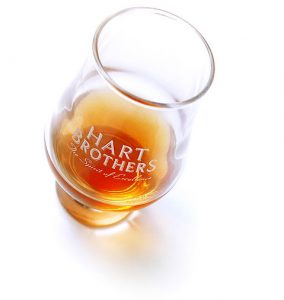
A malt that is both vibrant and complex in nature. The nose is rounded with notes of ripe citrus fruit, almonds and sherry-soaked sponge. There are also hints of menthol and a slight peat aroma.
A soft Lowland character layered with sweet sherry spice. Brown sugar, toffee, more fruit and salted dark chocolate with a warming spice.
The finish is considerably long and reflects the palate. More fruit, toffee and spice, with a lingering finish of barley sugar.
The STUART monarchs ruled Scotland for over 300 years and for the last hundred years of this period, they also ruled in England. This is an exceptional record for such turbulent times.
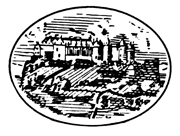
The founder of the dynasty ROBERT II and then his son Robert III reigned without distinction from 1371 to 1406. Robert III’s eldest son was given the name JAMES – a name which would be carried through the family for nine generations. With his ascension as JAMES I, the dynasty
flowered and produced a series of men ‘of remarkable ability’ and women ‘of fascinating and commanding personalities’ – in the words of an eminent historian.
Here, we are concerned only with the six kings and one queen who were the last rulers of the Kingdom of Scotland alone. In the middle of his reign, JAMES VI also became King of England – an event which ultimately led to the complete union of the Scottish and English crowns in 1707.
Each of these seven Stuart monarchs assumed the Scottish crown as a child. As a result, power-hungry nobles prospered and eventually had to be dealt with. Their burdens were also increased by a hostile neighbour – England; an unreliable ally – France; and religious upheaval.
The subsequent Stuart monarchs of Scotland and England were also exceptional people and their attempts to reconcile the religious and other differences between the two countries led to civil war, abdication and eventually to their replacement by the Hanoverians.

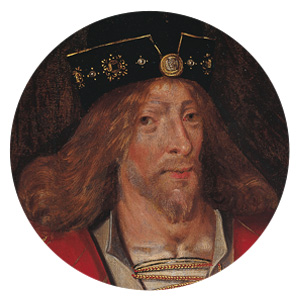
He was sent to France for sanctuary following the murder of his elder brother. The ship was intercepted by English pirates who captured James and delivered their prisoner to HENRY IV, King of England. Robert died on hearing the sad news and for the first 18 years of the reign of James I were spent as a prisoner in England.
For 18 years Scotland was ruled as regent by the infamous DUKE of ALBANY, followed by his son MURDOCH. Neither made any effort to secure the release of the King. James was treated well during his long captivity in England. In 1423, he fell in love with JOAN BEAUFORT – a close relative of the new English King HENRY V. Through her influence and the growing discontent with Murdoch’s regency, the release of James was negotiated in 1423 in return for a large ransom.
In 1424, James married Joan Beaufort and returned to Scotland to deal forcefully with the effects of regency misrule. In the process, the power of many nobles was broken, including that of the formidable Albany family – closely related to the Stuarts. A vigorous and ruthless man, James I succeeded in re-establishing peace and justice. In so doing, he made many implacable and vengeful enemies. In 1437, conspirators forced their way into the royal residence, wounded the Queen and assassinated the King.
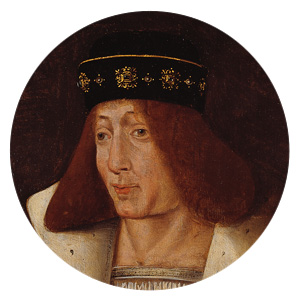
Another difficult period followed in which at first, his mother Joan and his cousin the Earl of DOUGLAS acted as regents. Later, Sir Alexander LIVINGSTON and Sir William CRICHTON were involved.
Livingston and Crichton were responsible for the infamous ‘Black Dinner’. This was the callous murder, in the presence of the ten-year-old king, of the young new Earl of DOUGLAS – a possible future claimant to the throne.
In 1449, at the age of 18, James suddenly seized power and dismissed the regents and their appointees. In the same year, he married MARY of GUELDRES – a woman of great character and intelligence – who ably supported her husband in the continuation of his father’s struggle to reduce the power of the noble, land-owning families.
Amongst these, the Douglas family – linked by intermarriage to the Stuarts – were especially dangerous. In 1452, in an act of personal violence, James II accused the Earl of conspiracy and stabbed him to death.
Using a blend of force and diplomacy, James II succeeded in controlling the rebellious nobles whilst increasing the power and wealth of the Crown. He developed the use of artillery to besiege the hitherto impregnably fortified castles of his enemies. Ironically, he was killed by the explosion of one of his own guns whilst attacking the English-held castle at Roxburgh.
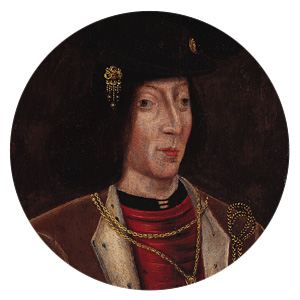
His mother Mary of Gueldres – aided by Bishop KENNEDY – first acted as regent. After her death, power was seized by the BOYD family and in 1466, the young King was taken into their custody in Edinburgh castle.
The marriage of James III to MARGARET of DENMARK in 1469 marked the end of the King’s minority and thereafter the Boyds were rapidly removed from power. James was a pious and cultured man and preferred the company of other cultured men. He thereby incurred the resentment of his nobles but ruled successfully for twenty years.
His two brothers JOHN and ALEXANDER, plotted incessantly against him. John was eventually imprisoned and died mysteriously in captivity. Alexander became an ally of the English and waged war unsuccessfully against his brother James. James acquired the Orkney and Shetland islands for Scotland through his marriage to Margaret. He gave to Scotland a period of prosperity whilst further enriching the Crown. He also made serious attempts to reduce the traditional hostility between England and Scotland.
In 1488, at SAUCHIEBURN near Stirling, James III confronted an alliance of disaffected nobles who had seized his eldest son. Defeated, he escaped from the battlefield only to be thrown from his horse and murdered by an unknown passer-by.
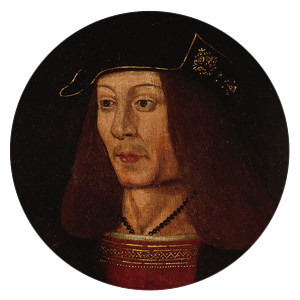
He had been forced by the victorious rebel nobles to accompany them to the battle and, as a penance, he wore an iron belt for the rest of his life.
The noble families of HOME and HEPBURN had led the successful insurrection and thereby derived considerable benefits. James IV, however, rapidly succeeded in re-imposing royal authority.
A gifted and dynamic man, James ruled wisely for 25 years – establishing famous centres of learning such as the Edinburgh Royal College of Surgeons and accomplishing major building works in the royal castles of Edinburgh, Stirling and Linlithgow. Substantial improvements in the civil and criminal law were also achieved under his rule.
Militarily, his successes included breaking the power of the rebellious LORD of the ISLES and the establishment of a Scottish navy. The flagship ‘MICHAEL’ was the largest vessel of its time.
Like his father, James IV tried to end the wars with England, which had continued to erupt for more than 200 years, by arranging a suitable royal marriage. His efforts were rewarded in 1503 when he married MARGARET TUDOR – daughter of HENRY VII of England.
Unfortunately, the potential benefit of this marriage was lost when England was later drawn into a religious war against France, by POPE JULIUS II. James IV felt obliged to assist France, Scotland’s traditional ally. In 1513, he led an army south to distract the English and was disastrously defeated and killed at the battle of FLODDEN.
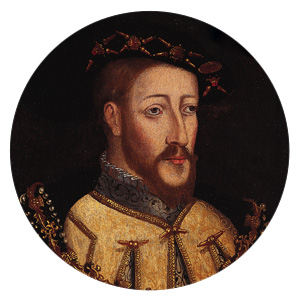
Unfortunately, his mother, Margaret Tudor, as the natural regent, was the sister of the reigning King of England – Henry VIII. However, her early re-marriage to the Earl of ANGUS in 1514 made it possible for the King’s half-French cousin – the Duke of ALBANY – to assume the regency.
This arrangement brought its own problems. Albany’s 10-year rule was conscientious but unpopular and expensive. Whilst he cemented relations with France, he also offended many who now doubted the wisdom of rejecting England.
Following the end of Albany’s regency, the behaviour of the King’s mother, Margaret Tudor, caused certain difficulties. She decided to divorce Angus whose reaction was to kidnap the boy-King, holding him prisoner for two years, James V succeeded in escaping from detention in 1528 and his aversion to Angus led him to pursue a pro-French and pro-Catholic policy throughout his active reign.
James V persecuted the pro-English nobles with particular severity. He married two French princesses: MADELEINE who died two months later; and MARY of GUISE, mother of two sons who died in infancy.
James V was intelligent but unstable. Acquisitive by nature, he built up considerable wealth at the expense of the nobles and the Church. However, by offending the nobles, he committed the
same fatal error as his grandfather James III.
James V joined the Pope’s religious alliance with France against HENRY VIII of England and with insufficient support led an army south only to be defeated by Henry VIII’s forces at SOLWAY MOSS in 1542. He then suffered a nervous breakdown and died shortly after learning that his newly-born child was a daughter and not the hoped-for son.
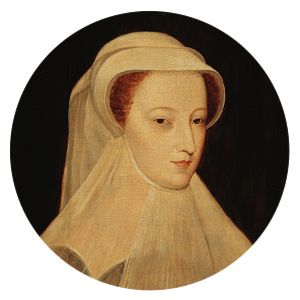
By now, the Scottish nobility was irrevocably split between the pro-English Protestant and pro-French Catholic factions.
The new regent, the Earl of ARRAN, immediately arranged for the infant Mary to be married to EDWARD son of the English King HENRY VIII but repudiated the arrangement shortly afterwards. He then sent Mary to be raised in France where in 1558 she married FRANCIS, heir to the French throne. Meanwhile in Scotland, English invasions and the growth of French influence were deeply resented. In 1554, Arran was displaced as regent in favour of the Queen Mother, MARY of GUISE, but resumed power with English help in 1559.
In 1560, Mary’s husband Francis died prematurely after only one year as King of France. His mother, CATHERINE de MEDICI, assumed power in France and Mary returned to Scotland in 1561 as a young widow.
Advised by her half-brother the Earl of MORAY and William MAITLAND, Mary embarked on an initially successful reign.
She also sought to obtain recognition of her claim to succeed the new Queen of England ELIZABETH I. Unfortunately, this claim was based on the technical illegitimacy of Elizabeth herself.
Lord DARNLEY, an English-bred Tudor cousin, was Mary’s careful but disastrous choice of husband. Darnley proved to be weak and unreliable and soon plotted with others against her. He conspired in the violent death of her secretary RIZZIO and was himself eventually murdered. Mary was accused of complicity – particularly as she chose as her third husband the Earl of BOTHWELL – the principal assassin!
In 1567, the pro-English nobles rebelled and defeated Mary’s forces at CARBERRY HILL. They imprisoned her in LOCHLEVEN CASTLE and compelled her to abdicate in favour of JAMES her infant son by Darnley. She escaped in 1568 only to be again defeated at LANGSIDE.
Her flight to England led to 19 years as Queen Elizabeth’s prisoner. She was finally executed for conspiracy in 1587.
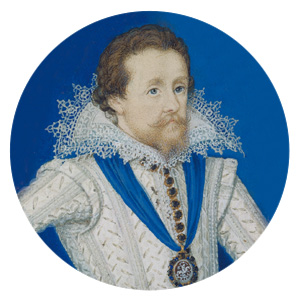
The event was not universally popular and the ex- Queen’s supporters remained powerful and dangerous.
The ensuing prolonged period of regency was particularly turbulent and confused. Four regents were successfully involved – the Earls of MURRAY, LENNOX, MAR and MORTON. In 1582, the sixteen-years-old King himself was kidnapped in the RUTHVEN RAID by the pro-English nobles.
James VI escaped from the captors in 1583 and ruled with great skill in the difficult years which followed. With the help of wise counsellors, he succeeded in containing the civil and religious conflict in Scotland – using the immense patronage which controlled of Church property now gave him. He also established a wide respect for law and order.
His great ambition was to succeed the childless ELIZABETH I as King of England. To ensure this, he made a treaty with Elizabeth in 1586 and later even agreed to the execution of his own mother, Mary, Queen of Scots.
In 1603, his prudent policy had its reward and he became King JAMES I of ENGLAND on the death of Elizabeth I. The power and prestige of the English crown gave him much greater control in Scotland than any of his Stuart predecessors. He largely succeeded in reconciling the conflicting interests in Scotland and gave the Protestant religion a more universal appeal.
James VI was the last of the Stuart dynasty to rule Scotland as a separate kingdom although the full administrative union of the two crowns was not achieved until 1707.
The photographs of paintings of the Stuart monarchs in this publication are reproduced with the permission of the National Galleries of Scotland.
The original paintings are currently to be seen in a permanent display – DYNASTY: THE ROYAL HOUSE OF STUART – at the Scottish National Portrait Gallery / Royal Museum of Scotland – 1, Queen St., Edinburgh EH2 1JD.
James I – oil on panel, by an unknown artist
James II – oil on panel, by an unknown artist
James III – oil on panel, by an unknown artist
James IV – oil on panel, by an unknown artist
James V – oil on panel, by an unknown artist
Mary, Queen of Scots – oil on panel, by an unknown artist James I & VI – miniature on vellum by Isaac Oliver
(Lent by Buchanan Society)
The unique and alluring nature of Single Cask releases means we cannot bring you the same delightful elixirs again and again – once the whisky is gone, it’s gone for good. The expressions live as a fragment of the past, never to be repeated.
We invite you to delve into our whisky archives. Explore past releases and bask in amber nostalgia, accompanied with distillery history and tasting notes from Mr. Hart himself.
Hart Brothers can trace their origins in the licensed trade back to the late 19th century when the family were licensed victuallers and publicans in Paisley, the mill town on the outskirts of Glasgow. It was not until 1964 that brothers Iain & Donald Hart incorporated the company as Wine & Spirit Wholesalers and Scotch Whisky Blenders.
Alistair Hart joined the company in 1975 and it was his responsibility as chief blender to source vintage casks of single malt whisky that were not readily available through any specialist whisky shop or online whisky site. Today, we continue to secure special and rare malt and grain whiskies that are further matured and only selected for single cask bottling after careful tasting and consideration.
We always pride ourselves on continuing the spirit of excellence by offering some of the finest single malt scotch whisky available through our selected distributors overseas.

We make sure our customers can best share with us the single malt scotch whisky experience which is why we add nothing to the malt whisky other than the purest water. Today, we pride ourselves on continuing the spirit of excellence by offering some of the finest single malt scotch whisky available through our selected distributors overseas.

Hart Brothers Limited, 3 Peel Park Place, College Milton, East Kilbride G74 5LW, Scotland
Tel: +44 (0) 1355 247 180 | Fax: +44 (0) 1355 244 615
